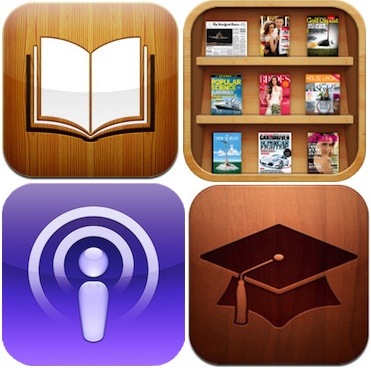
Since the funeral for Steve Jobs was held on Friday, I decided that I would publish my final post on his legacy today.
After Steve resigned as Apple’s CEO in August, everyone began writing stories about Steve’s legacy as though he were dead. Now that he is, I have read repeats of what was said then. Instead of simply reposting my take on Steve’s legacy, I decided to write a fresh perspective, one that encompasses his entire life, and not just his career at Apple.
Steve was born in 1956 to two college students who ultimately decided to put him up for adoption. Steve was adopted by a family in the San Francisco area and attended high school in Cupertino. As a kid he enjoyed technology and even had an internship at Hewlett Packard as a teen (while Steve was CEO of Apple, the company purchased part of the HP campus and intends to build its new campus at that location).
After graduating high school, Steve attended a few college classes before dropping out to devote his time to Apple. The story of Apple is often told due to its romanticism. A company started by two friends in a garage, but what we often over look is the two men themselves. Steve and Steve Wozniak (Woz) complemented each other. Woz was a technological genius and could build anything. Steve had the vision of what could be and pushed Woz to build it. The Apple I was a useless machine by todays standards, but it was the world first computer that did not encompass an entire room. The Apple II brought computing to the home.

After the success of the Apple II, Steve and Woz separated within the company. Woz remained with the Apple II group and Steve move on and worked with the group that would eventually launch the Macintosh. The Macintosh used a completely new form of software, Graphical User Interface (GUI), that Apple at acquired (the nice way of putting it) from Xerox. GUI required a new device be created to control the computer and the mouse was born. The Macintosh encompassed what Steve strove to achieve with all products, function and design. The design of the Macintosh was an all in one computer that allowed for simple functionality and portability. When Steve introduced the talking Macintosh in 1984, computing was changed yet again. It was GUI that paved the way for IBM and Microsoft to talk Apple on in the personal computer market.
Shortly after the introduction of Macintosh, Steve was gone. He was fired by the man he chose to be CEO. The Board of Directors proved to be more loyal to the CEO than the founder. Woz had left Apple a year before Steve to return to college. He became a teacher, and has not worked for Apple since.
Steve found himself without a job and without a future. He had a load of cash, but he felt the need to create, and create he did. He spent most of his fortune to business ventures. First, he created a software company called NeXT. NeXT was a new spin on GUI and he set out to attack Microsoft and Apple. He was openly critical of Apple’s decisions throughout this period. The second venture was the purchase of Pixar from George Lucas. Lucas felt he could do nothing with the company and sold it to Steve. There he met John Lasseter and other computer graphical designers who had a vision for a movie. By 1995, the first film was ready and Toy Story was released. It was the first movie to be fully computer animated. The movie was a huge success, and Steve was back on top. NeXT, however, was failing to compete with Microsoft and Apple was slowly dying, having gone through a string of unsuccessful CEOs.
In 1997, Steve found himself back at the company he started when Apple bought NeXT. Steve was immediately named interim CEO and he immediately asked the entire Board of Directors to resign. He replaced them with top technology firm founders and CEOs (such as Eric Schmidt from Google). The second thing Steve did was killing most of Apple’s product line. He felt that Apple was building too much and consumers were overwhelmed with the selection of “professional” and “consumer” products. It was his vision to build a machine that both, and in 1998, Steve unveiled the iMac. The iMac was an all-in-one, built for both consumers and professionals. It was also designed to look appealing. It came in a variety of colors and looked great on a desk.

The iMac began a string of hit products for Apple with Steve at the helm. In 2000, Apple began to seed Mac OS X with his NeXT technology under the hood. In 2001, Steve and Apple changed the music world with iTunes and the iPod. Not only could you listen to music, but also you could buy it, download it, and own it. That was a fairly new concept for the music industry and, as Steve explained in 2003, it was not easy to convince them to take part. However, as Napster and other programs that were deemed illegal became popular, the record labels gave in.
In 2004, Steve was diagnosed with pancreatic cancer. A form, which he said, was treatable with surgery. In a commencement speech at Stanford University in 2005, Steve talked openly about his diagnosis and how close to death he had become. Steve’s speech has been shown countless times over the past several days. In 2006, Steve and Disney came to an agreement and they bought Pixar for $7.6 billion, making Steve chairman of Disney’s Board of Directors and making him the largest shareholder of Disney stock.

After several years of innovation with the iPod and Mac, Apple released the iPhone in 2007. The iPhone changed the way carriers and phone manufacturers related to each other in the United States. Before the iPhone, you could only purchase games from the carrier, but the App Store allowed developers to distribute their applications to the consumers in a safe, secure way. The iPhone paved the way for the iPad release in 2010. The iPad is, by far, the tablet leader around the world, and most analysts agree that will not change anytime soon. Steve shared at his appearance at D8 in 2010, that the iPad was designed first by Apple, but he felt the phone should come first. The market was not yet ready for a tablet. It was this extraordinary vision that made Steve successful.
Steve’s last appearance on stage came in June 2011 and the introduction of iCloud. Although it has yet to be fully released (but it will be this Wednesday), legions of Apple fans and users are awaiting its arrival to simplify the way their devices communicate with one another.
Steve’s legacy should not be the Macintosh, iPod, iPhone, or even the iPad, because they will change along with technology. His legacy most likely will not be his ability to understand the market the public unlike any other. Instead, the legacy of Steve Jobs was his ability to rebound. He rebounded after being fired by Apple in the mid-1980s, he rebounded when he became CEO of the failing Apple, and he rebounding following his first battle with cancer in 2004. Nothing could keep Steve down. The media has assumed that Steve died of cancer, but that has yet to be confirmed. Many have suggested that he has been fighting this latest round of cancer for over two years, and if that is the case, even though it ultimately won, he put up one hell of a fight and refused to allow it to take him away from his work. Steve’s devotion to Apple and his success of taking a company months from bankruptcy and making it the largest technology company on the planet is what has earned him the honor of being Fortune’s CEO of the decade (2000-2010). His mind for business and technolog, as an innovator on the scale of Henry Ford and Thomas Edison (Steve holds over 300 patents) are his legacy.




























